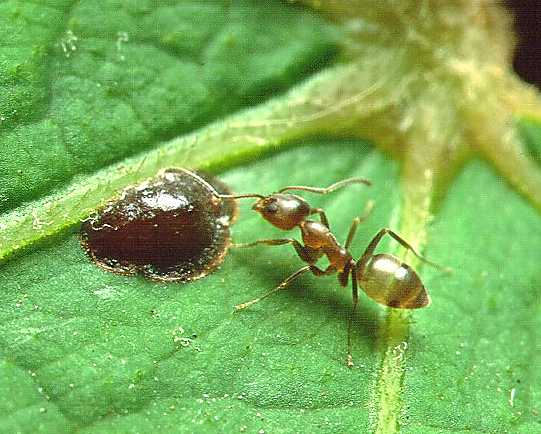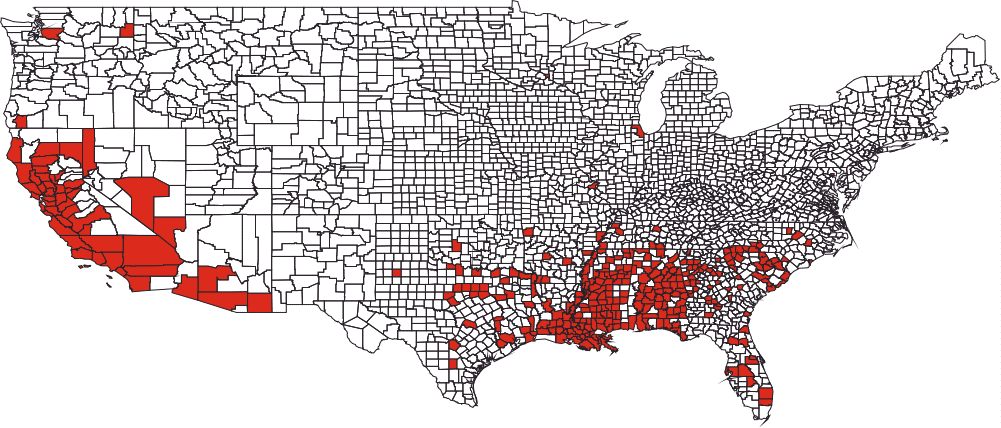Ants. The little monsters seem to be everywhere, and no wonder–a recent BBC article states that a single mega-colony of ants has colonized much of the world (Matt Walker, Editor, Earth News. http://news.bbc.co.uk/go/pr/fr/-/earth/hi/earth_news/newsid_8127000/8127519.stm; published: 2009/07/01):
Argentine ants living in vast numbers across Europe, the US and Japan belong to the same inter-related colony, and will refuse to fight one another. The colony may be the largest of its type ever known for any insect species, and could rival humans in the scale of its world domination. What’s more, people are unwittingly helping the mega-colony stick together.
Argentine ants (Linepithema humile) were once native to South America. But people have unintentionally introduced the ants to all continents except Antarctica. These introduced Argentine ants are renowned for forming large colonies, and for becoming a significant pest, attacking native animals and crops. In Europe, one vast colony of Argentine ants is thought to stretch for 6,000km (3,700 miles) along the Mediterranean coast, while another in the US, known as the “Californian large”, extends over 900km (560 miles) along the coast of California. A third huge colony exists on the west coast of Japan.
While ants are usually highly territorial, those living within each super-colony are tolerant of one another, even if they live tens or hundreds of kilometers apart. Each super-colony, however, was thought to be quite distinct. But it now appears that billions of Argentine ants around the world all actually belong to one single global mega-colony. Researchers in Japan and Spain led by Eiriki Sunamura of the University of Tokyo found that Argentine ants living in Europe, Japan and California shared a strikingly similar chemical profile of hydrocarbons on their cuticles. But further experiments revealed the true extent of the insects’ global ambition. The team selected wild ants from the main European super-colony, from another smaller one called the Catalonian super-colony which lives on the Iberian coast, the Californian super-colony and from the super-colony in west Japan, as well as another in Kobe, Japan. They then matched up the ants in a series of one-on-one tests to see how aggressive individuals from different colonies would be to one another.
Ants from the smaller super-colonies were always aggressive to one another. So ants from the west coast of Japan fought their rivals from Kobe, while ants from the European super-colony didn’t get on with those from the Iberian colony. But whenever ants from the main European and Californian super-colonies and those from the largest colony in Japan came into contact, they acted as if they were old friends. These ants rubbed antennae with one another and never became aggressive or tried to avoid one another. In short, they acted as if they all belonged to the same colony, despite living on different continents separated by vast oceans.
The most plausible explanation is that ants from these three super-colonies are indeed family, and are all genetically related, say the researchers. When they come into contact, they recognize each other by the chemical composition of their cuticles. “The enormous extent of this population is paralleled only by human society,” the researchers write in the journal Insect Sociaux, in which they report their findings. However, the irony is that it is us who likely created the ant mega-colony by initially transporting the insects around the world, and by continually introducing ants from the three continents to each other, ensuring the mega-colony continues to mingle. “Humans created this great non-aggressive ant population,” the researchers write.
A PDF of the complete Sunamura et al. article can be found here.





